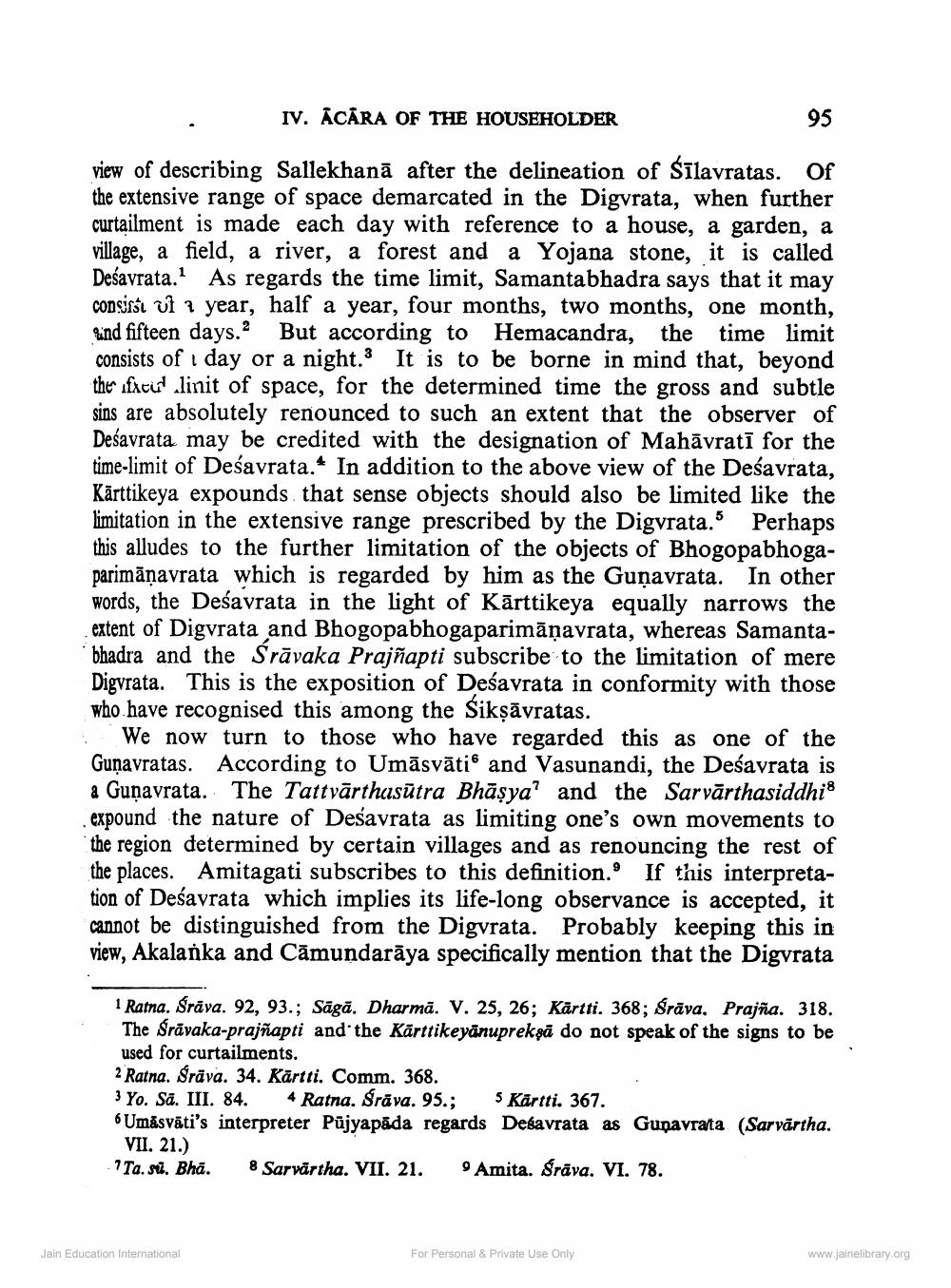________________
IV. ACARA OF THE HOUSEHOLDER
95
view of describing Sallekhanā after the delineation of śīlavratas. Of the extensive range of space demarcated in the Digvrata, when further curtailment is made each day with reference to a house, a garden, a village, a field, a river, a forest and a Yojana stone, it is called Deśavrata. As regards the time limit, Samantabhadra says that it may consist vi 2 year, half a year, four months, two months, one month, rind fifteen days. But according to Hemacandra, the time limit consists of 1 day or a night. It is to be borne in mind that, beyond ther ifxcul linit of space, for the determined time the gross and subtle sins are absolutely renounced to such an extent that the observer of Deśavrata may be credited with the designation of Mahāvratī for the time-limit of Deśavrata. In addition to the above view of the Deśavrata, Kārttikeya expounds that sense objects should also be limited like the limitation in the extensive range prescribed by the Digvrata. Perhaps this alludes to the further limitation of the objects of Bhogopabhogaparimāņavrata which is regarded by him as the Guņavrata. In other words, the Deśavrata in the light of Kārttikeya equally narrows the
extent of Digvrata and Bhogopabhogaparimāņavrata, whereas Samanta'bhadra and the Srāvaka Prajñapti subscribe to the limitation of mere Digvrata. This is the exposition of Deśavrata in conformity with those who have recognised this among the Sikṣāvratas. i We now turn to those who have regarded this as one of the Gunavratas. According to Umāsvāti and Vasunandi, the Deśavrata is a Gunavrata. The Tattvārthasūtra Bhāşya? and the Sarvārthasiddhi expound the nature of Desavrata as limiting one's own movements to the region determined by certain villages and as renouncing the rest of the places. Amitagati subscribes to this definition. If this interpretation of Deśavrata which implies its life-long observance is accepted, it cannot be distinguished from the Digvrata. Probably keeping this in view, Akalanka and Cāmundarāya specifically mention that the Digvrata
1 Ratna. Śrāva. 92, 93.; Sāgā. Dharmā. V. 25, 26; Kārtti. 368; Srāva. Prajña. 318.
The Srāvaka-prajñapti and the Kārttikeyānuprekşā do not speak of the signs to be used for curtailments. 2 Ratna. Srāva. 34. Kärtti. Comm. 368. 3 Yo. Sa. III. 84. 4 Ratna. Srāva. 95.; 5 Kärtti. 367. Umāsväti's interpreter Pūjyapāda regards Desavrata as Gunavrata (Sarvärtha.
VII. 21.) .? Ta. sü. Bhā. 8 Sarvärtha. VII. 21. Amita. Śrāva. VI. 78.
Jain Education International
For Personal & Private Use Only
www.jainelibrary.org




